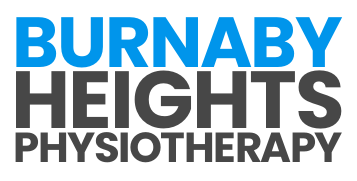
Overcoming Heel Pain: Physiotherapy for Plantar Fasciitis Explained
February 10, 2025
Targeting Pain at the Source: How Acupuncture Supports Joint Health
March 31, 2025Mobility issues can make daily activities challenging, affecting everything from walking and climbing stairs to maintaining balance and independence. These difficulties can arise from aging, injuries, or chronic pain, leading to stiffness, weakness, and limited movement. In this blog, we’ll explore how physiotherapy helps individuals with mobility challenges regain function, improve movement, and prevent further decline. Whether you’re recovering from surgery, managing a chronic condition, or simply looking to enhance mobility, physiotherapy offers proven strategies to restore confidence and strength.
Understanding Mobility Issues
Mobility issues refer to difficulty in moving freely and efficiently, often affecting the ability to walk, stand, balance, or perform everyday tasks. These challenges can develop due to various reasons, including:
- Aging and Muscle Weakness: Natural aging can lead to reduced muscle strength, joint stiffness, and balance issues, making movement more difficult.
- Injuries and Surgeries: Fractures, sprains, ligament tears, and post-surgical recovery (such as knee or hip replacements) can temporarily or permanently limit mobility.
- Neurological Conditions: Stroke, multiple sclerosis, Parkinson’s disease, and spinal cord injuries can affect coordination, muscle control, and balance.
- Arthritis and Joint Disorders: Osteoarthritis, rheumatoid arthritis, and other joint conditions can cause pain, inflammation, and stiffness, making movement uncomfortable.
- Chronic Pain Conditions: Long-term conditions such as fibromyalgia, sciatica, or chronic lower back pain can reduce mobility due to discomfort and muscle tension.
- Postural and Balance Issues: Poor posture, scoliosis, or vestibular disorders can lead to instability and difficulty maintaining proper movement patterns.
Physiotherapy plays a crucial role in addressing these mobility challenges by improving movement, reducing pain, and restoring function.
Benefits of Physiotherapy for Mobility Issues
Physiotherapy is a non-invasive, evidence-based approach to improving mobility, offering several key benefits:
- Improves Muscle Strength and Flexibility: Weak or tight muscles can restrict movement. Physiotherapy helps strengthen muscles and increase range of motion.
- Enhances Balance and Coordination: For individuals with age-related balance problems, physiotherapy can help reduce fall risk and improve stability.
- Reduces Joint Stiffness and Pain: Targeted exercises and manual therapy techniques help relieve tension and improve joint mobility.
- Restores Functional Movement: Physiotherapists design personalized programs to help individuals regain the ability to walk, climb stairs, or perform daily tasks.
- Prevents Further Mobility Loss: Early intervention with physiotherapy can prevent worsening movement restrictions, reducing the likelihood of long-term disability.
- Supports Post-Surgical Recovery: For individuals recovering from joint replacements or orthopedic surgeries, physiotherapy is essential for regaining mobility.
By addressing the root cause of mobility limitations, physiotherapy helps individuals regain confidence in movement and maintain an active lifestyle.
Types of Physiotherapy Treatments Used for Mobility Issues
Physiotherapists use a variety of treatments to improve mobility, depending on the underlying cause of movement restrictions. Common physiotherapy approaches include:
- Manual Therapy: Hands-on techniques such as joint mobilization, soft tissue massage, and stretching help improve flexibility and reduce stiffness.
- Gait Training and Balance Exercises: Individuals with walking difficulties benefit from gait retraining, balance drills, and stability exercises to enhance movement patterns.
- Strength and Resistance Training: Targeted strengthening exercises help support joints, improve endurance, and restore functional movement.
- Hydrotherapy (Aquatic Therapy): Water-based exercises allow for low-impact movement, making it easier for individuals with joint pain or weakness to exercise.
- Assistive Device Training: Learning how to properly use mobility aids such as canes, walkers, or orthotics can improve movement efficiency and prevent falls.
A customized physiotherapy plan ensures that treatments are tailored to individual needs, optimizing results for better mobility.
Recommended Physiotherapy Exercises for Improving Mobility
Physiotherapy exercises are designed to improve flexibility, strength, and coordination, helping individuals regain confidence in their movement. Some of the most effective exercises for mobility include:
- Leg Lifts and Knee Extensions: Strengthening the quadriceps and hip flexors helps improve walking ability and stair climbing.
- Heel-to-Toe Walking: This balance exercise helps enhance coordination and reduce fall risk.
- Seated Marching: A great exercise for seniors or those with limited mobility, seated marching helps increase circulation and leg strength.
- Hip Bridges: Strengthening the lower back and gluteal muscles improves hip mobility and spinal stability.
- Ankle Circles and Calf Stretches: Keeping the ankles flexible and strong is essential for maintaining good walking mechanics.
- Arm Raises and Shoulder Rolls: For individuals with upper-body mobility issues, gentle arm movements help improve range of motion.
- Step-Ups: Using a low step, this exercise mimics stair climbing and helps restore functional mobility.
Performing these exercises regularly under the guidance of a physiotherapist can lead to gradual but significant improvements in mobility.
How Long Does It Take to See Results from Physiotherapy for Mobility Issues?
The timeline for seeing improvements in mobility through physiotherapy depends on the severity of the condition, overall health, and commitment to the treatment plan. Some individuals with mild stiffness or minor muscle weakness may notice positive changes within just a few sessions, as increased movement and flexibility help restore function. For those experiencing moderate mobility limitations due to chronic pain or postural imbalances, it can take several weeks of consistent therapy before noticeable gains in strength and flexibility occur.
More severe cases, such as post-surgical recovery, often require months of rehabilitation, with progress depending on factors like surgical healing, muscle strength, and adherence to prescribed exercises. Since physiotherapy is a progressive process, each session builds on previous progress. Sticking to a personalized treatment plan and staying consistent with at-home exercises can significantly speed up recovery and improve overall movement efficiency.
Recovering Mobility After Surgery: How Physiotherapy Helps
Physiotherapy is a critical component of post-surgical recovery, helping individuals regain mobility, rebuild strength, and prevent complications. It is especially beneficial for:
- Joint Replacement Surgeries (Knee, Hip, Shoulder): Physiotherapy helps restore movement, strengthen surrounding muscles, and improve joint flexibility after surgery.
- Spinal Surgery Recovery: Gradual movement therapy helps individuals regain core strength and spinal mobility while preventing stiffness.
- Ligament and Tendon Repairs (ACL, Rotator Cuff): Structured rehabilitation ensures proper healing and reduces the risk of re-injury.
- Fractures and Orthopedic Surgeries: Physiotherapy assists in regaining full movement after prolonged immobilization in a cast or brace.
- Neurological Surgeries (Stroke, Spinal Cord Injuries): Physiotherapists help clients retrain movement patterns and regain functional independence.
Post-surgical physiotherapy is carefully planned to match the body’s healing process, ensuring safe and gradual recovery while minimizing the risk of complications.
How Often Should Someone with Mobility Issues See a Physiotherapist?
The frequency of physiotherapy sessions varies based on the severity of mobility issues and personal recovery goals. Individuals recovering from recent injuries or surgeries often benefit from attending physiotherapy two to three times per week in the early stages to prevent stiffness and accelerate healing. Those dealing with chronic conditions, such as arthritis or long-term pain, may require weekly or biweekly sessions to manage symptoms, maintain flexibility, and slow the progression of mobility loss.
For those looking to maintain strength, balance, and mobility over time, monthly physiotherapy check-ins combined with regular home exercises can be effective in preventing future decline. A physiotherapist will continually assess progress and adjust the treatment frequency to ensure the best possible results.
Lifestyle Changes to Support Physiotherapy for Better Mobility
In addition to physiotherapy sessions, making specific lifestyle changes can enhance mobility improvements and prevent further limitations. Some key strategies include:
- Regular Physical Activity: Engaging in low-impact activities like walking, swimming, or cycling helps keep muscles strong and joints flexible.
- Stretching and Mobility Exercises: Performing daily stretching routines and therapist-prescribed exercises helps maintain flexibility and prevent stiffness.
- Proper Nutrition: Eating a diet rich in anti-inflammatory foods, lean protein, and essential vitamins supports muscle and joint health.
- Hydration: Staying properly hydrated reduces muscle cramps and joint stiffness, aiding in better movement.
- Posture Awareness: Maintaining proper posture while sitting, standing, and walking can prevent additional strain on muscles and joints.
- Weight Management: Maintaining a healthy weight reduces excess strain on joints and improves movement efficiency.
- Adequate Sleep and Recovery: Rest is essential for muscle repair and mobility restoration, ensuring that the body fully recovers after therapy sessions.
By combining physiotherapy with these healthy lifestyle habits, individuals can experience greater improvements in mobility and long-term physical well-being.
Regain Your Mobility, Regain Independence
Regaining mobility is possible with the right approach. Physiotherapy offers tailored treatment plans to strengthen muscles, improve flexibility, and enhance movement, making everyday activities easier and more comfortable. Whether you’re looking to recover from surgery, prevent further mobility loss, or improve balance and coordination, physiotherapy can help.At Burnaby Heights Physiotherapy, our team is dedicated to helping individuals overcome mobility challenges and regain independence. Contact us today to book an appointment and take the next step toward better movement and a healthier, more active life.






